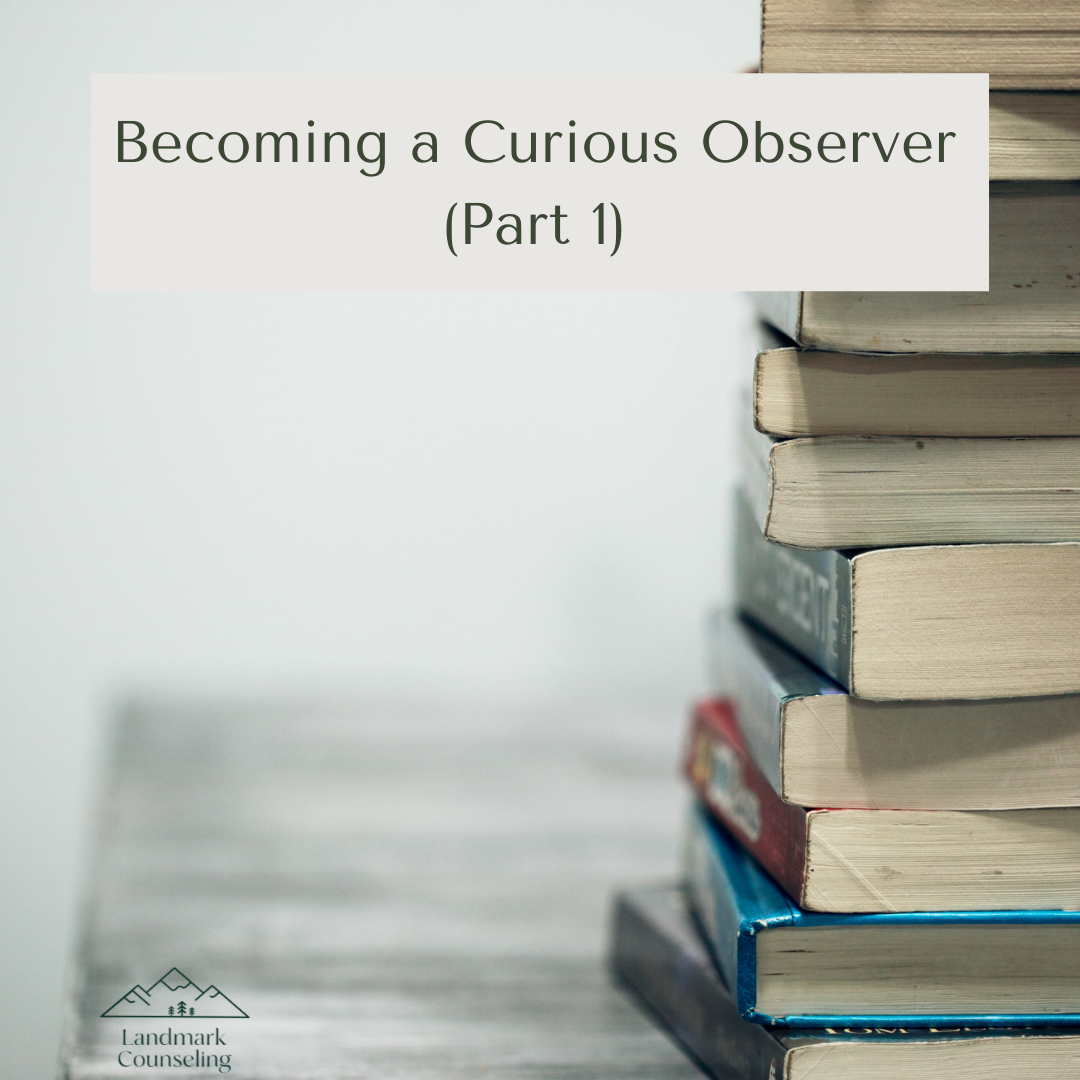Being a Curious Observer (Part 1)
Do you ever hit points where you can’t understand why you’re reacting the way that you are, why you’re experiencing a certain body sensation (i.e. heart racing or sweaty palms), or why something bothers you the way that it does?
Does it ever feel like you’re moving through life in a “waking sleep”, where you are living (awake) but without much intentional thought or introspection (or perhaps being disconnected from yourself or your experiences)?
One of the ways I often begin to explore these (very normal) experiences is through the lens of curiosity.
One of the aspects of curiosity that is incorporated into many conversations I have is the idea of curiosity and becoming a curious observer and noticer of ourselves. When we’re going through hard, painful, or traumatizing situations, we often have learned to disconnect from some aspects of ourselves in order to survive. When that happens, we begin to lose access to important data, including understanding “what is going on beneath the surface”. One of
the ways that we begin to access some of this data and understanding, then, is to gain access to curiosity by taking on the stance of a curious observer and noticer… of ourselves!
Think of curiosity as non-judgmentally seeking to observe and understand something or to have a desire to learn or gain insight about something or someone.
We so often don’t non-judgmentally observe or learn about ourselves. We judge emotions as “good” and “bad” (or perhaps a caregiver, teacher, or society modeled this). We might be hard on ourselves for particular reactions or responses that we have. We might have been shamed for certain things growing up.
When we begin to shift our judgment towards curiosity and observation, we are able to notice critical aspects of our life, including:
What our body or reactions are truly telling us
What we’re actually being triggered by (sometimes what we think is a trigger and the root of that trigger are different)
What we need in order to navigate an emotion, body sensation, thinking pattern, or interaction
What demands vs. resources we have (for example, in the workplace)
Overt and covert forms of discrimination and harassment at work and in other areas of our life
What coping strategies work in what environment
What the signs are that we are moving to a place of fight-flight-freeze-submit-attach responses
And yet, curiosity itself can feel triggering for some individuals, which is where engaging in counseling can come into play! We can’t change what we don’t know, and that’s why curiosity is such an important part of our healing journey and of the counseling process.
This blog post provides general information and is not meant to be specific advice to any individual situation. This should not be taken as specific medical, psychological, or mental health advice, nor should this be construed as the initiation of a therapeutic client relationship. This blog post is not a substitute for mental health counseling. Please talk to your doctor before beginning any new exercise or movement-based routines and talk to your counselor regarding best treatments and techniques for your particular situation.


